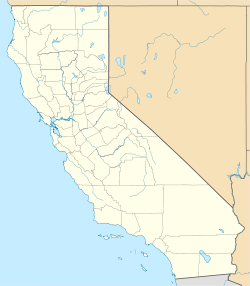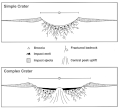The Victoria Island structure is a 5.5 km (3 mi) bowl-shaped structure buried in the shale sediments of the Sacramento-San Joaquin River Delta , 12 miles (19 km) west of Stockton, California . The circular structure is part of a former sea bed, and lies 1,490–1,600 meters (4,890–5,250 ft) below sea level.[ 2]
Discovered during oil exploration and reported at the Lunar and Planetary Science Conference in Houston, Texas, in March 2007, it is thought to be a buried impact crater formed between 37 and 49 million years ago.[ 3] [ 4]
Victoria Island , which the structure is named for, is in the San Joaquin River Delta at approximately 37°53′24″N 121°32′06″W / 37.890°N 121.535°W / 37.890; -121.535 [ 5]
See also
References
^ Rajmon, D. "Impact Database 2009.2" . Impact Field Studies Group . entry for "Victoria Island". Retrieved 2010-03-16 . ^ Paul Rincon (2007). 'Crater' spied under California , BBC News
^ Spevack, S. C., Morrow, J. R., Spevack, B. Z. (2007). "3-D seismic and well log analyses of the Victoria Island Structure, a Potential Buried Impact Crater, San Joaquin County, California" (.PDF) . Lunar and Planetary Science Conference XXXVIII. Retrieved 2009-09-17 . {{cite web }}: CS1 maint: multiple names: authors list (link )^ Roach, John (2007-03-27). "Giant Meteorite Hit Ancient California, Crater Study Suggests" . National Geographic News . National Geographic Society. Archived from the original on April 4, 2007. Retrieved 2009-09-01 . ^ "Victoria Island" . Geographic Names Information System United States Geological Survey , United States Department of the Interior .
External links
Lists Confirmed
≥20 km diameter Topics Research
















